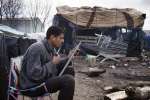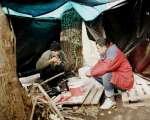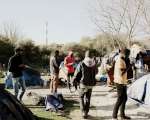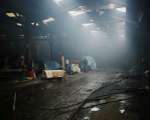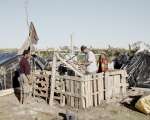Number of Eritreans seeking asylum in Europe soars over figures for last year
News Stories, 14 November 2014
GENEVA, November 14 (UNHCR) – The UN refugee agency on Friday said the number of asylum-seekers in Europe from Eritrea over the first 10 months of this year has risen threefold compared to the same period in 2013. In Ethiopia and Sudan, neighbouring Eritrea, the number of Eritrean refugees has also increased sharply.
"So far this year, nearly 37,000 Eritreans have sought refuge in Europe, compared to almost 13,000 during the same period last year. Most asylum requests have been lodged in Sweden, Germany and Switzerland, with the vast majority of the Eritreans having arrived by boat across the Mediterranean," UNHCR spokesman Adrian Edwards told journalists in Geneva.
"Our office in Italy reports that 22 per cent of the people arriving by boat are Eritrean, a total of nearly 34,000 people this year. This makes Eritreans the second largest group to arrive in Italy by boat, after Syrians," he added.
Most of the Eritreans arriving in Europe have travelled, initially, via Ethiopia and Sudan. These countries have also experienced a dramatic increase in arrivals, including large numbers of unaccompanied children. More than 5,000 Eritreans crossed into Ethiopia last month alone, compared to the average of 2,000 arrivals per month since the beginning of the year.
About 90 per cent of those who arrived in October are from 18- 24 years old. Seventy-eight children arrived on their own, without an adult family member. The trend seems to continue with more than 1,200 Eritreans having arrived in Ethiopia during the first week of November.
"In Sudan, we have also been witnessing a marked increase in the number of arrivals since the beginning of 2014. This year, more than 10,700 Eritreans have sought refuge in Sudan, an average of more than 1,000 arrivals per month," Edwards said.
There are currently more than 216,000 Eritrean refugees in Ethiopia and Sudan, which has been hosting Eritrean exiles for more than 40 years. Eritreans started to arrive in Ethiopia in 2002, after the end of the conflict between the two countries. The recent arrivals said they were fleeing an intensified recruitment drive into the mandatory and often open-ended national service.
Growing numbers of the predominantly young refugees in Ethiopia and Sudan have become frustrated with the shortage of services and absence of self-reliance opportunities in the camps. Limited funding for the Eritrean refugee programme in both countries has resulted in a lack of secondary and post-secondary education, as well as vocational training and job opportunities.
Deprived of any prospects for a better future and feeling that they have nothing to lose, many fall prey to unscrupulous smugglers and put themselves in danger by trying to cross the Mediterranean on overcrowded and unsafe boats.
"We are extremely concerned that the refugees crossing into Ethiopia will eventually try to move on," Edwards said. There is a need to boost education and livelihood opportunities for the refugees in the countries neighbouring Eritrea to prevent people moving on simply out of desperation," he added.
At the same time, he noted, UNHCR was calling on Europe to step up efforts to provide credible legal alternatives to dangerous voyages, to protect people from the risks of travelling with smugglers.
The collective response needed to maintain a strong capacity to rescue people at sea and increase safer ways for refugees to find safety, including enhanced resettlement, other forms of humanitarian admission and private sponsorship schemes. UNHCR also urged European governments to do more to facilitate family reunification and use programmes such as student or employment visas to benefit refugees.
During the first 10 months of 2014, a total of 36,678 Eritreans sought refuge in 38 European countries in 2014, compared to 12,960 during the same period last year. Most asylum requests were presented in Sweden (9,531), Germany, (9,362) Switzerland (5,652) and the Netherlands (4,113). Authorities in Italy have recorded 342 asylum applications by Eritreans thus far this year.
Sudan is the main country of asylum for Eritreans with 109,594 refugees at the end of October 2014. 10,701 people have arrived since the beginning of the year, including 1,259 during the month of October. The majority of the refugees are in refugee camps in the arid eastern part of the country (Gaderef and Kassala), with smaller numbers in the capital Khartoum.
Ethiopia is the second largest country of asylum with 106,859 Eritrean refugees, including 1,591 unaccompanied children at the end of October.
























